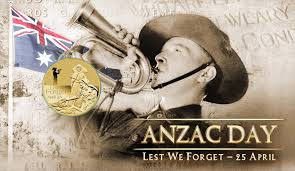For maths we did a think board to exercise our brain and to warm up our thinking.
I am a Year 8 student at Tamaki Primary School in Auckland, NZ. I am in the Kia Manawanui Syndicate and my teachers are Ms Aireen and Whaea Petra.
Wednesday, 26 March 2014
ThinkBoard
For maths we did a think board to exercise our brain and to warm up our thinking.
Respect
Yesterday for skills for adolescence we did a Google drawing about respecting others and who we are.
6 Hats Current Events
Today for reading we had to do a Current Event about a article and I chose Snake and Crocodile
My Goal Setting
These are my goals for this term.
Tuesday, 25 March 2014
Character Description
Yesterday for reading we did a character description about Dick Grace.
Forgotten Hero
For Reading we did a Presentation about Forgotten which is a book about war.
Monday, 17 March 2014
NorthHead
This is a presentation on researching specific information about a significant historic places in New Zealand.
Monday, 10 March 2014
Maths Think Board
Today for maths I was doing a Think Board. The think board tasks took lots of effort and number knolwedge.
Wednesday, 5 March 2014
Anzac Day
Anzac Day - Cloze Task
WAL:ABOUT ANZAC DAY AND ABOUT WHAT IT MEANS.
Most Anzac day services being with a march of returned service personnel
wearing their medals, and marching behind banners and standards. The
veterans are joined by other community groups, including members
and the armed forces, the Red Cross, cadets etc.
The march continues with the local war memorial, where a service takes place.
This includes the laying of wreaths by various organisations and members of
the public. Flowers have traditionally been laid on graves and memorials in
memory of the soldiers. Laurel and rosemary are often used
in wreaths. Laurel was used by the ancient Romans as a symbol of honour
and was woven with a wreath to crown victors or the brave. Rosemary is used
for remembrance. The wreaths are laid to honour the people who have died
fighting for New Zealand.
The poppy has become the symbol of Anzac Day. The Flanders poppy as it is
now called grew in the trenches and craters of the war zone in Belgium and
at Gallipoli. These poppies grew wild in the spring. The soldiers thought of the
poppies as soldiers who had died. The poppy was made famous by Colonel
J.M. McCrae's poem fought in Flanders' Fields. Poppies are sold on the days
before Anzac Day to raise money for the R.S.A. [Returned Services Association]
In most ceremonies of remembrance there is a reading of a poem. This is
often "The Ode to the Fallen" by Laurence Binyon. It was first published in
the Times newspaper in 1914.
They shall not grow old as we that are left grow old.
Age shall not weary them, nor the years condemn.
At the going down of the sun and in the morning.
We will remember them.
The last post is the trumpet call sounded in army barracks at 10pm at
night to mark the end of the activities. It is also used at military
funerals and commemorative services to show that the soldier's day has
drawn a final close.
This is usually followed by a period of silence for one or two minutes as a sign
of respect for those who have died. After observing the silence the flags are
raised from half-mast to the masthead. The Rouse is then played. The Rouse
called the soldier's spirits to arise and fight for another day.
The Reveille is played at the dawn services instead of the Rouse. The Reveille is
played only as the first call in the morning. It woke the soldiers up at
dawn.
Often hymns were sung and speeches made. The important part of the ceremony is to remember those who died.
 This blog post is about what anzac day is and what we do on the dawn parade.
This blog post is about what anzac day is and what we do on the dawn parade.
Subscribe to:
Comments (Atom)